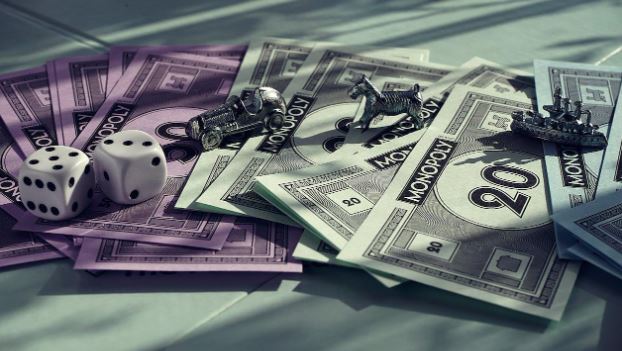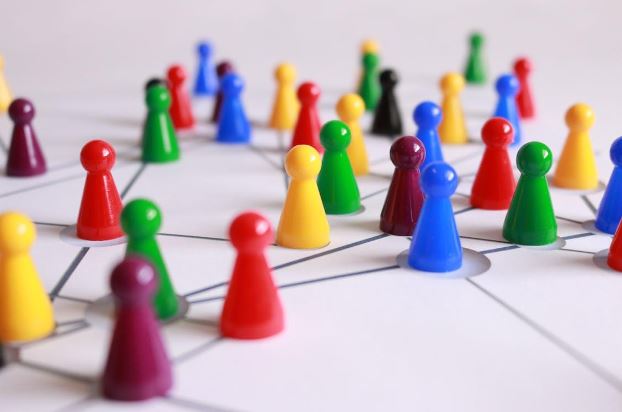Hot Stories

Recent Stories
7 Exciting Facts About Popular European Games
Posted by Thandiubani on Thu 29th Sep, 2022 - tori.ngYou may know a lot about the most famous European games, but do you know what else is out there?

European countries have a rich history and culture, which is reflected in their games. The continent has many popular games including casino games at casinoonline-cz that are easy to play and fun for everyone. Here's what you need to know about some of the most famous European games played in countries such as the Czech Republic, Germany, Italy and more.
You may know a lot about the most famous European games, but do you know what else is out there? Here's a list of some popular European games and their interesting stories:
Casino Games
Despite the popularity of casino games throughout Europe and at Bizzo casino in the Czech Republic nowadays, the oldest known gambling establishment in Europe was located in Venice, Italy. It was called Casin di San Giorgio, which is believed to have been opened in 1438 by the city's mayor.
It is believed that Venice's Casin di San Giorgio was not only the first casino in Europe but also one of the earliest casinos in the world. Casino games popularity continued to grow throughout Europe during the next few centuries. In France, for example, Louis XIV (the Sun King) allowed gambling at Versailles Palace around 1650 as long as it did not interfere with official duties or other activities taking place at court.
It wasn't until 1774 that France officially legalized gambling when its government passed a law stating that anyone could open a casino if they had permission from local authorities and paid an annual tax of 1 percent on their revenue. Casino games in both land-based and online casinos are still highly popular in Europe.
Chess: A Game for the Royals
The origins of chess are shrouded in mystery, but most historians agree that it was invented in India. The initial version of chess was called chaturanga, which means "four parts" and refers to the four divisions of an army—infantry, cavalry, chariots, and elephants.
Chess spread from Persia to Europe with Alexander the Great's invasion of Asia Minor (modern Turkey) in 334 BC. However, it did not become popular until much later when Charlemagne (742–814) introduced royal tournaments where he would play against his courtiers.
This was the game that Marco Polo encountered in China and introduced to Europe. The change from an 8×8 to 10×10 board occurred in Spain in the late 15th century. The modern form of chess appeared in about 1500 when Queen Isabella of Spain issued a decree banning all forms of gambling at court except chess.
Go: The Oldest Game in the World
This strategy board game was created in China over 2,500 years ago, making it older than chess and checkers by a long shot. It's played on a 19x19 grid with black and white stones, and each player attempts to capture their opponent's stones by surrounding them with their own pieces.
In its original form, go was only played by emperors and generals during times of peace so they could strategize about war. However, it wasn't until Japan adopted go as its national pastime that it truly began spreading across Asia and eventually Europe too. Today go has become popular throughout many parts of Europe, including Germany, France, and England.
Hnefatafl: The Viking’s Favorite Game

Hnefatafl is a strategy board game that’s most commonly identified with the Vikings and Scandinavian cultures. Though its exact origins are unknown, Hnefatafl was played in Scandinavia as far back as the 12th century AD. It has been suggested that Hnefatafl may have been brought to Norway by traders from Persia or other parts of Asia Minor during this time.
Hnefatafl was also popular among other peoples who lived near the Baltic Sea, including Germans, Greeks, and Romans. Hnefatafl is similar to chess in terms of how you move around the board and capture pieces.
Pétanque: A French Classic
Pétanque is a classic French game that originated in the south of France and is played by two teams of three players. The name pétanque comes from the French word pétoncle, which means “clam” or “cockle.”
Mancala: A Game With African Origins
Mancala is a game that originated in Africa, though it was played by the ancient Egyptians as well. Today, it's still popular worldwide. The game is played with seeds or stones and involves moving them from one hole to another on a board, trying to collect more stones than your opponent.
Though there are different versions of Mancala around the world, they have many similarities—for example, they all involve moving pieces around a board and getting more pieces than your opponent at the end. One version is popular in Europe today: Oware (also called Awari). It has been played for thousands of years—so long that it has spread worldwide!
Monopoly: The Landlord's Game
Monopoly is a game that has been played by millions of people around the world, but most don't know that it was inspired by another board game invented in 1906. The Landlord's Game was created by Elizabeth Magie and was intended to demonstrate how property owners get rich at the expense of others. Charles Darrow, who owned a toy company, was selling some of these games when he had an idea: he would add more expensive properties to the game and make it into a commercial product.
The result? Monopoly! This version of the game featured streets instead of railroads and houses instead of utilities (electricity, water, etc). It wasn't long before Monopoly became so popular that it became its own brand: Hasbro still produces versions today and many people recognize this familiar logo.
Rummikub or Rummy
Rummikub is a tile-based game that was invented in 1930s Germany. It was originally called Rummy, and the name was changed to Rummikub when it came to America in the 1970s. The game has been made in Israel for decades and has become a popular family game.
A very fun aspect of this game is that players can rearrange tiles on the table during their turn, which means you can have several options available at once depending on what cards are placed down by your opponents. You could have up to four different combinations between your hands and other players' plays!
You can play with two or four people, and each player gets 13 tiles at the start of each round (14 if there are only two people). The goal is simple: be the first person who uses all their tiles to make melds (hands), runs (sequences), or sets (groups).
Conclusion: Games Are a Great Way to Learn About Different Cultures
As you can see, there are some amazing games in Europe. Not only do they have rich histories and fascinating stories, but they also help us learn more about the cultures that created them. They are a great way to learn about different cultures, history, geography, and math of course. If you’re traveling in Europe on a school trip or taking a vacation with your family, it can be exciting to play games that teach you the basics of each country’s language and culture.
Top Stories
Popular Stories
Stories from this Category
Recent Stories
















































